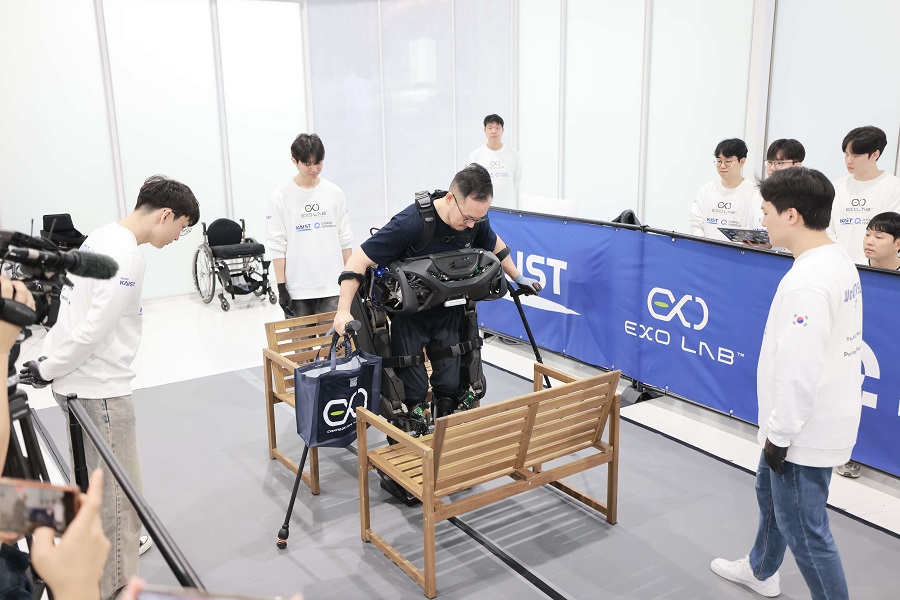Researchers at the Korea Advanced Institute of Science & Technology (KAIST) have unveiled a new wearable robot developed to help paraplegic people walk that doesn’t require the help of others to be put on.
WalkON Suit F1 is designed to assist people with American Spinal Injury Association (ASIA) grade A (complete paralysis) injuries, the most severe level of paraplegia.
The new model has a walking speed of 3.2 km/h, reaching the standard walking speed of people without disabilities, and can overcome everyday obstacles such as narrow passages, doors and stairs.
While the research team has been designing prototypes since 2015, previous versions required the help of other people to put the robot on.
The new model has found a solution to the issue by applying a front docking method instead of a rear docking method, so that the robot can be put on immediately without the user having to get out of the wheelchair and into the robot, which would require the help of other people during the transition.
Moreover, before wearing the robot, it can walk alone like a humanoid robot and approach the user.
KAIST has also implemented a function that actively controls the centre of weight against the force of gravity, so that it keeps its balance without falling over even if the user pushes the robot in other directions.
KAIST said the new additions have improved the embedded software technology of the motor driver, with an additional visual recognition system for obstacle detection and an AI card for the application of neural networks also being installed.
The exterior design of the WalkON Suit F1, which is somewhere between a humanoid and a wearable robot, was designed by professor Hyunjoon Park of KAIST's department of industrial design, in collaboration with Angel Robotics, who helped create the components.
Professor Nyoungchul Kong, professor of mechanical engineering at KAIST, said: “WalkON Suit is the culmination of wearable robot technology for the disabled, The numerous components, control, and module technologies derived from WalkON Suit are setting the standard for the entire wearable robot industry.”
Latest News
-
US pauses UK tech prosperity deal over wider trade disputes
-
Asahi weighs dedicated cybersecurity unit after ransomware disruption
-
Crypto exchange HashKey ‘raises $206m’ in Hong Kong IPO
-
UK signs agreement with Canada on semiconductor research network
-
Build-A-Bear teams up with Uber Direct for same-day delivery service
-
BBVA expands ChatGPT to 120,000 employees
The future-ready CFO: Driving strategic growth and innovation
This National Technology News webinar sponsored by Sage will explore how CFOs can leverage their unique blend of financial acumen, technological savvy, and strategic mindset to foster cross-functional collaboration and shape overall company direction. Attendees will gain insights into breaking down operational silos, aligning goals across departments like IT, operations, HR, and marketing, and utilising technology to enable real-time data sharing and visibility.
The corporate roadmap to payment excellence: Keeping pace with emerging trends to maximise growth opportunities
In today's rapidly evolving finance and accounting landscape, one of the biggest challenges organisations face is attracting and retaining top talent. As automation and AI revolutionise the profession, finance teams require new skillsets centred on analysis, collaboration, and strategic thinking to drive sustainable competitive advantage.
© 2019 Perspective Publishing Privacy & Cookies












Recent Stories